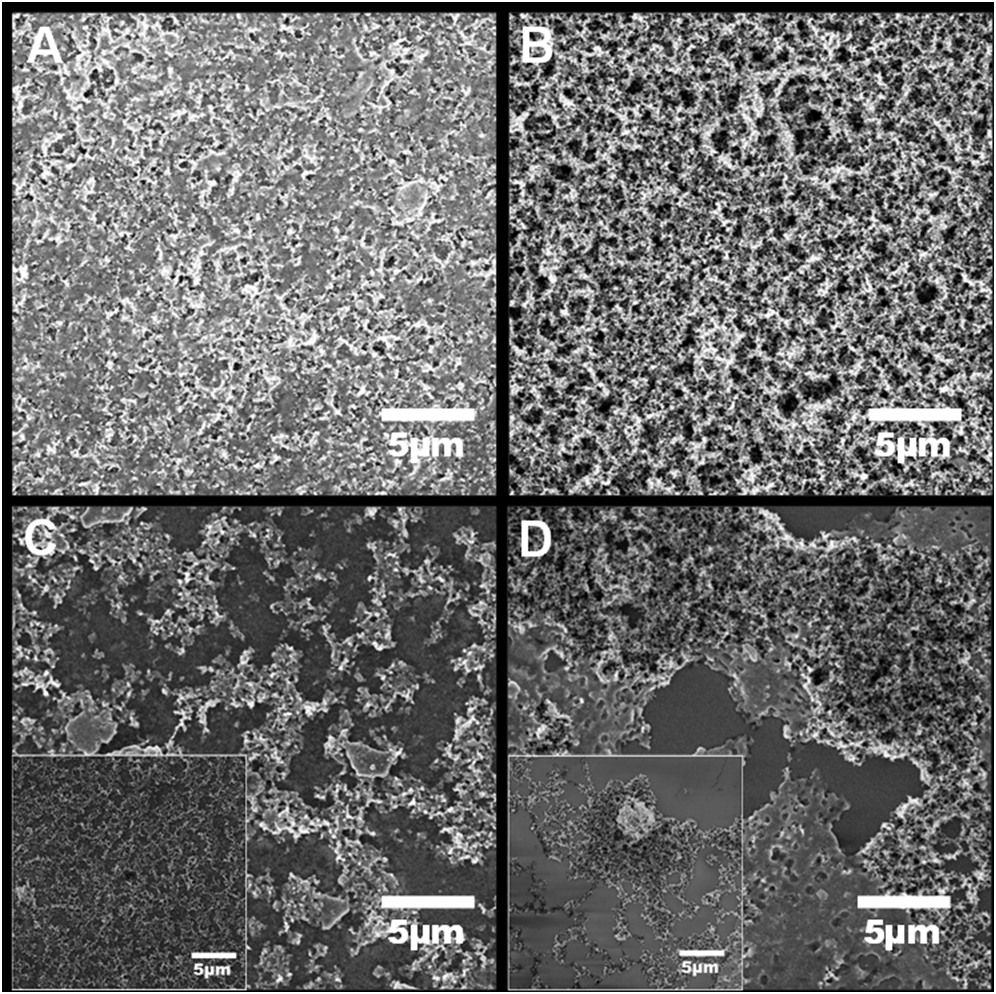Investigating electrode materials morphology, a spin coating technique was used to prepare the composite thin-films. Typical coating methods such as blade coating, dip coating, and drop casting form dense, thick film layers that are inappropriate to adequately visualize distinctive morphology and differentiate the degree of material dispersity in the electrode. The spin coating method affords a thin, uniform film layer, and morphological differences can be easily detected even by optical microscopy (OM) at low magnification. While battery electrode performance cannot be directly measured using the spin-coating technique, the method is a facile approach to visualize more distinct images of the electrode components in order to judge materials distribution, and help interpret the impact of materials size and distribution on electrical and electro-chemical behavior in a dense electrode.

Figure shows Field Emission-Scanning Electron Microscopy (FE-SEM) images of OAFe3O4/carbon/P3HT and OA-Fe3O4/carbon/PVDF battery composite electrodes fabricated by doctor blade (Figure A and B) and spin coat (Figure C and D) processes, respectively.
Morphological differences between the two systems are difficult to observe from the doctor blade samples (Figure A, B) due to their thick, dense nature. Alternatively,distinct morphological differences are apparent with the thinner, spin-coated alternatives (Figure C, D). The spin coated material shows the distinct morphology associated with the material dispersion state.
About Spin Coating Technique
Spin coating is a procedure used to deposit uniform thin films to flat substrates. Usually a small amount of coating material is applied on the center of the substrate, which is either spinning at low speed or not spinning at all. Wikipedia
Reference:https: Brookhaven National Laboratory
